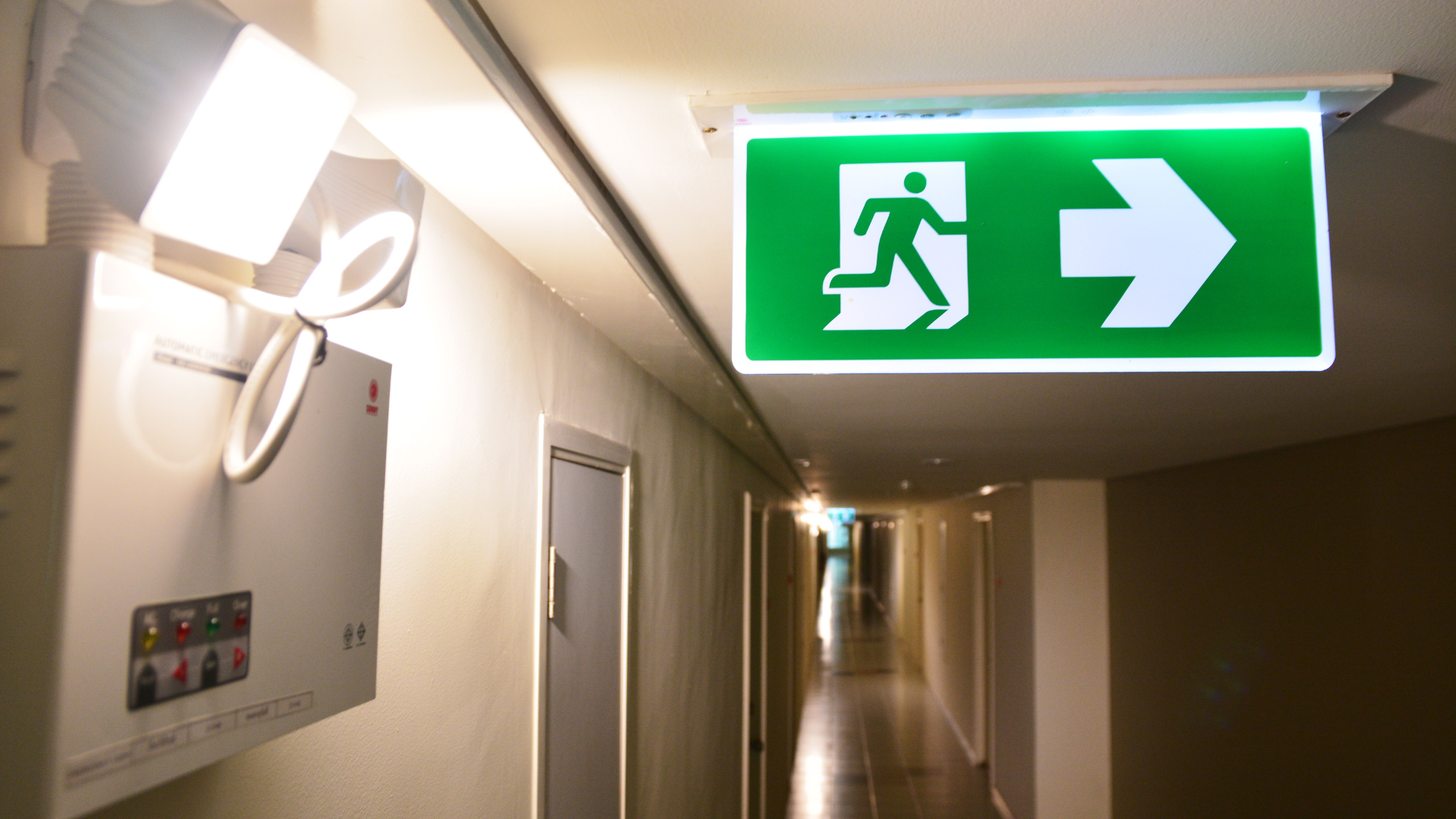Imagine a scenario where a fire breaks out in either a commercial or residential building; the flames lick at the walls and smoke billows. There is an immediate and obvious risk to your staff and to members of the public or visitors, and you face significant financial and personal loss.
Now, consider that scene where the process is contained within a designated area allowing time for occupants to evacuate and emergency services to take action. This is the power of a passive fire protection plan!
Did you know, over 70% of businesses that experience a significant fire either fail to re-open or cease to trade within 2 years?
Undoubtedly you will already have detection systems in place and agreed fire and evacuation policies for your staff. However, passive fire protection is a further area of fire safety that we find is often overlooked.
What Is The Difference Between Active And Passive Fire Protection?
Active fire protection is about detecting, stopping, and escaping a fire, and involves reaction to the fire by an individual or automated system – a fire detection device, for example.
Passive fire protection is about containing a fire, and stopping its spread: it does not require reaction – it is either built into, or can be retro-fitted to, the premises.
Defined by the UK Health & Safety governing body, passive fire protection in buildings involves the use of fire-resistant materials and construction techniques to prevent the spread of fire and smoke. Unlike manual active systems, passive measures operate automatically, making them reliable and indispensable elements of a building’s fire safety infrastructure. Passive fire protection aims to ensure astute fire compartmentation, so if a fire were to occur, its impact would be minimised, and lives and property would be safeguarded.
Key Considerations For Devising A Passive Fire Protection Plan
Passive fire protection in buildings is a legislative requirement under the Fire Safety Order. It empowers decision makers and stakeholders to make informed choices that prioritise safety and limit the financial impact of damage should a disaster occur.
Passive fire protection aims to safeguard the structure of the building, curb the spread of flame and smoke, and to maximise protection around escape routes thus significantly reducing the effect of any fire, increasing possible response and reaction times from staff and emergency services, and saving lives.
At BASSE, we realise the importance of fire safety. That’s why we’ve devised five crucial principles to review when creating a passive fire protection plan.

1. Identify Fire Hazards In Your Building
The first step in formulating an effective passive fire protection strategy is to conduct a comprehensive fire risk assessment of the building. This meticulous evaluation involves identifying and scrutinising areas that are most susceptible to fire hazards, such as kitchens, storage areas housing flammable substances, and plant rooms.
By gaining a deeper understanding of the distinct fire risks in various segments of your building, decision-makers can effectively devise a passive fire protection system.
2. Choose Appropriate Passive Fire Protection Measures
When focused on passive fire protection in buildings, it’s crucial to explore the array of options available. Most commonly, these measures include fire-resistant walls, doors, floors and fire stopping systems each designed for specific roles in containing fire and smoke – though it’s important to note that these systems aren’t universally applicable.
To make informed decisions, you must evaluate your building’s layout, function and occupancy for varying fire hazard levels. For instance, fire-resistant walls should be installed to partition areas susceptible to hazards, and fire stopping systems, such as fire-rated seals, should be fitted to doors to maintain barrier integrity.
Rigorous testing will ensure that your system results in robust fire safety, and meets required ratings set by legislation.
3. Ensure Proper Installation By A Certified Organisation
To adhere to regulations, your system should only be installed by an organisation with a passive fire protection certification – like BASSE.
With their expertise, skilled installers possess the knowledge to understand manufacturer specifications and industry standards, instilling confidence in decision-makers that their systems will seamlessly integrate into the building’s design and construction. This not only safeguards occupants, but also minimises the risk of fines and imprisonment due to non-compliance.
4. Conduct Regular Maintenance And Inspections
Regular inspections are of the utmost importance when it comes to fire protection. Forming the basis of fire safety regulations, they ensure continued effectiveness.
Conducted at planned intervals, scheduled maintenance will address any barriers, damages or wear and tear to your passive fire protection system that could decrease its effectiveness. Likewise, inspections will also facilitate an assessment of the overall condition of the system, enabling necessary repairs or upgrades.
This proactive approach will elevate the performance of your building’s passive fire protection strategy and expand the systems’ lifespan.
5. Incorporate Passive Fire Protection Into Building Design From The Word Go
Passive fire protection shouldn’t be an afterthought; it should be integrated into the very design of your building. To achieve this, however, it’s essential to consider measures during the early stages of planning that will fortify the facility against any potential hazards.
During the design phase, architects and engineers should strategically develop a passive fire protection plan that incorporates fire-resistant walls, floors and ceilings. This will create well-defined compartments, curtailing the speed at which fire and smoke spreads. The integration of fire doors and fire-rated glass at strategic points will also ensure safe evacuation routes and uphold the integrity of fire-resistant zones.
This step will foster a safer environment for both occupants and property and minimise the need for future retrofits or modifications.
Passive Fire Protection In Buildings With BASSE
Devising an effective passive fire protection plan is essential for ensuring the safety of your occupants and the protection of your property. And at BASSE, we’re here to guide you from cradle to grave.
Our dedicated team of passive fire protection contractors can assist you in developing a robust strategy that safeguards lives, shields your property, and ensures compliance with regulations. To book a passive fire survey today, contact us today.






















